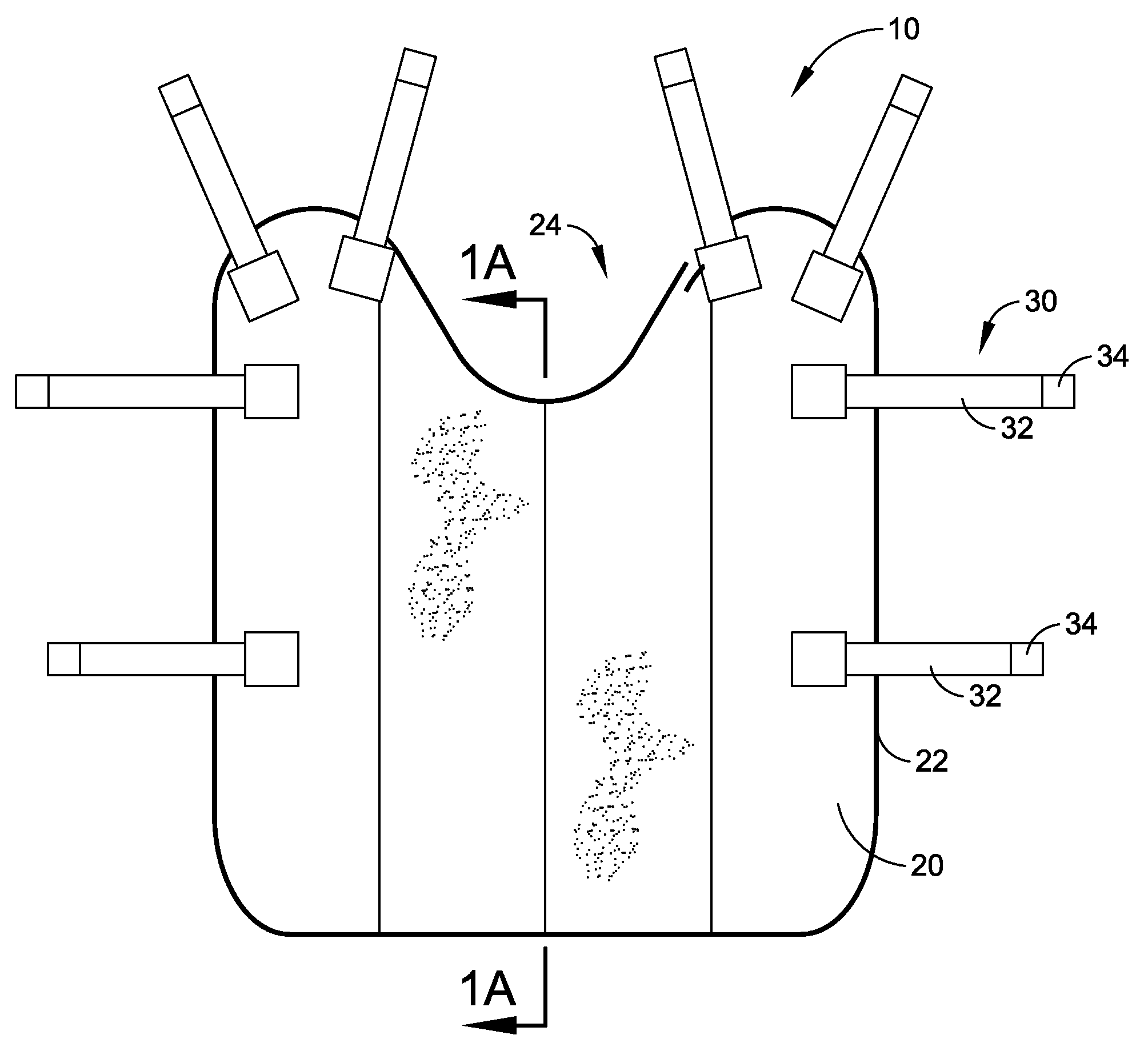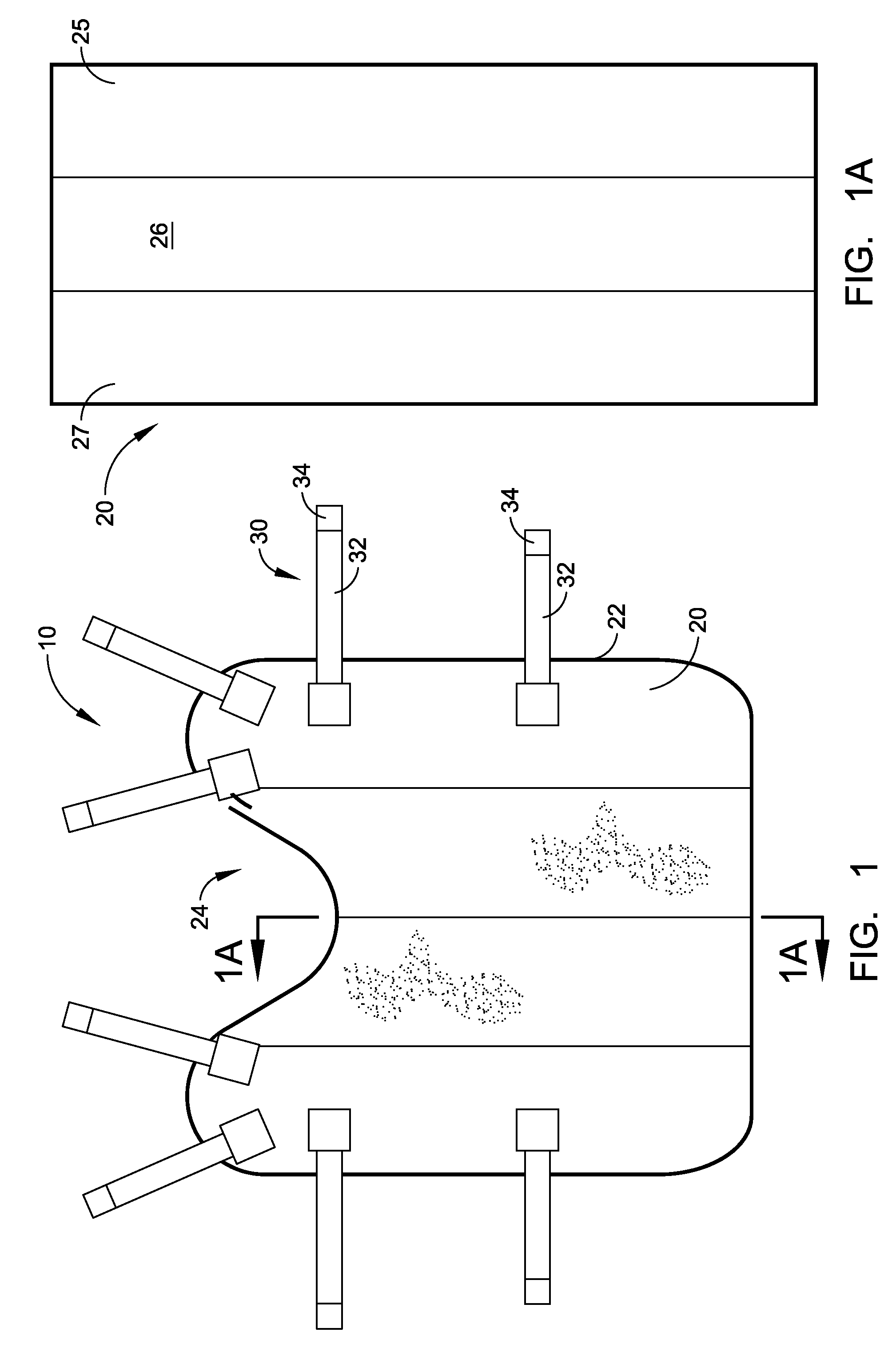Flexible cooling garment
a flexible, garment technology, applied in the field of garments, can solve the problems of increasing the exposure of people to the sun, less easy to cool oneself, and the removal of clothing, and achieve the effect of reducing the efficiency of clothing
- Summary
- Abstract
- Description
- Claims
- Application Information
AI Technical Summary
Benefits of technology
Problems solved by technology
Method used
Image
Examples
Embodiment Construction
[0050]Referring now to the drawings, wherein similar parts are identified by like reference numerals, FIG. 1 shows a top view of an embodiment of the flexible cooling garment 10 for attachment to the body of an animal (not shown). Garment 10 includes a body 20 and at least one attachment portion 30. Body 20 is preferably lightweight and flexible. Body 20 is generally defined by an outer seam 22. Outer seam 22 can define body 20 in various shapes and sizes to accommodate various animals. As shown, outer seam 22 defines a primarily rectangular shaped body 20 with a head opening 24, defining a garment 10 that is used to cover an animal such as a dog or horse.
[0051]Attachment portion 30 preferably includes a strap 32 and a connector portion 34. Strap 32 can be comprised of any type of flexible fabric and can be adjustable to fit various sized animals. Connector portion 34 is designed to engage the connector portion 34 located on the end opposite end of the garment 10. Connector portion ...
PUM
 Login to View More
Login to View More Abstract
Description
Claims
Application Information
 Login to View More
Login to View More - R&D
- Intellectual Property
- Life Sciences
- Materials
- Tech Scout
- Unparalleled Data Quality
- Higher Quality Content
- 60% Fewer Hallucinations
Browse by: Latest US Patents, China's latest patents, Technical Efficacy Thesaurus, Application Domain, Technology Topic, Popular Technical Reports.
© 2025 PatSnap. All rights reserved.Legal|Privacy policy|Modern Slavery Act Transparency Statement|Sitemap|About US| Contact US: help@patsnap.com



